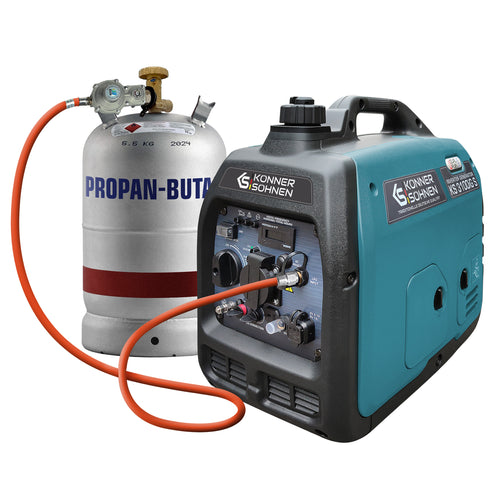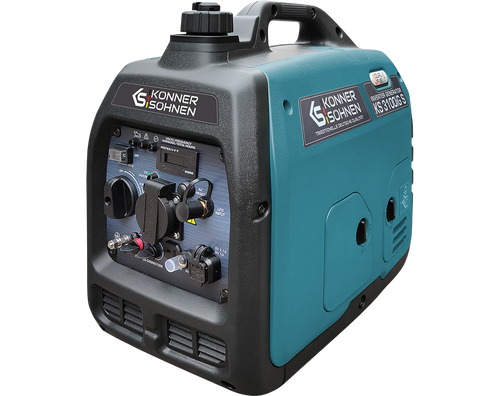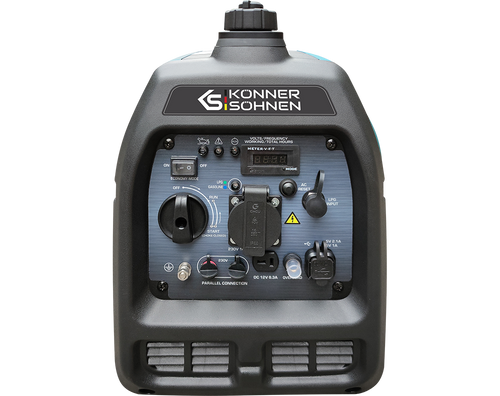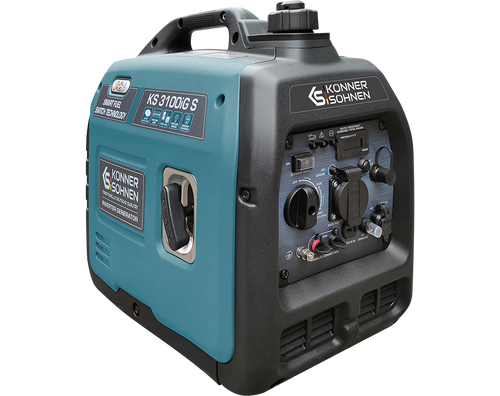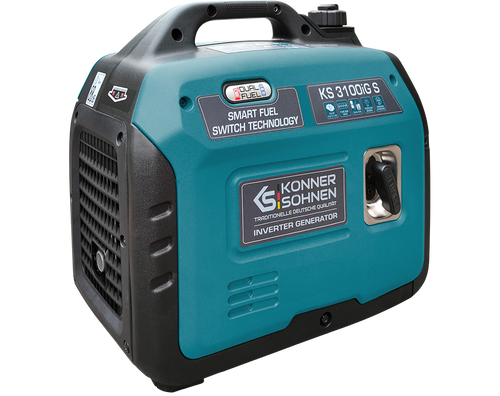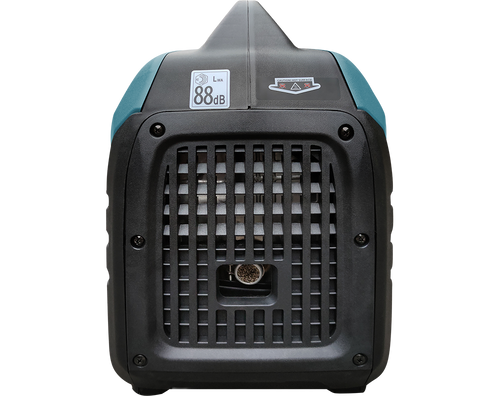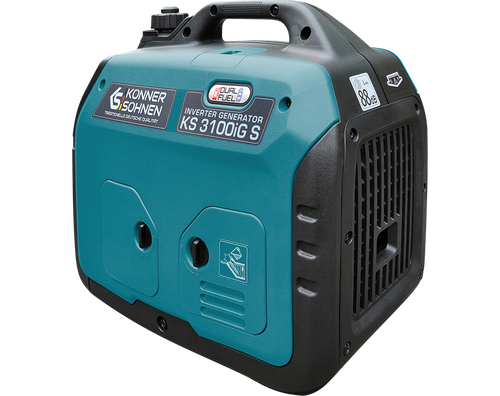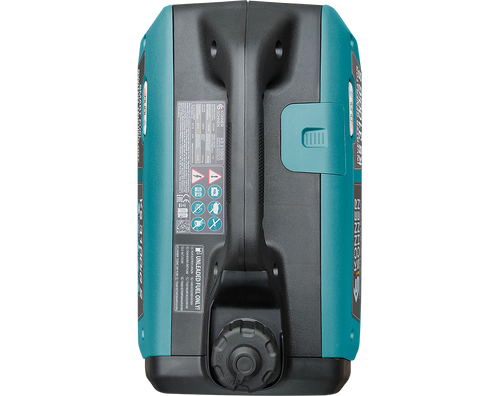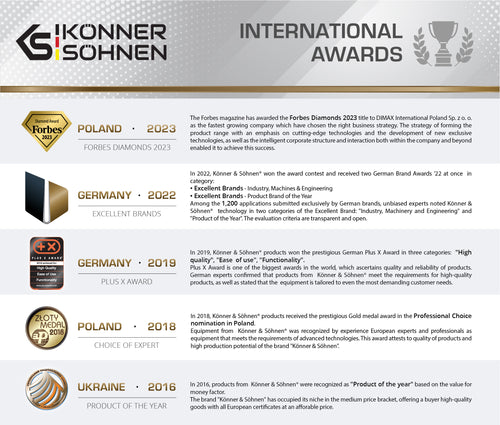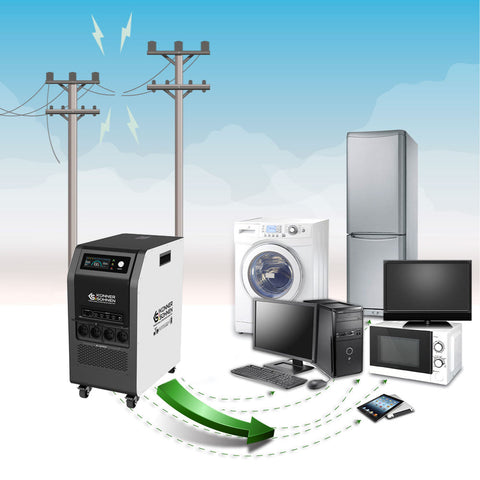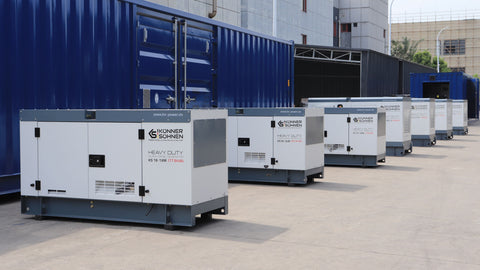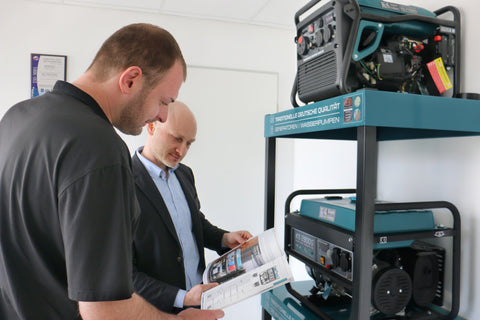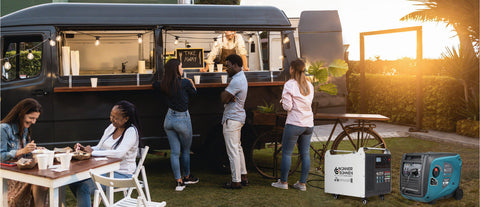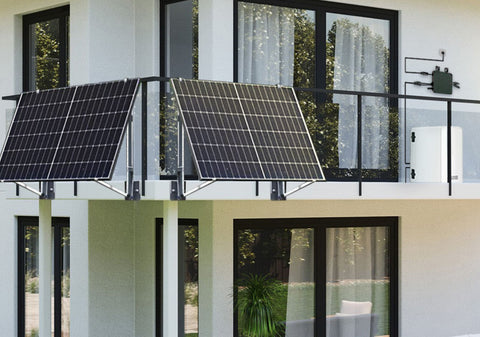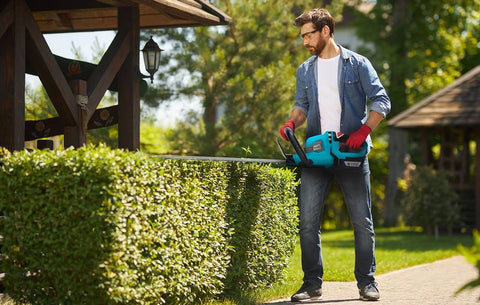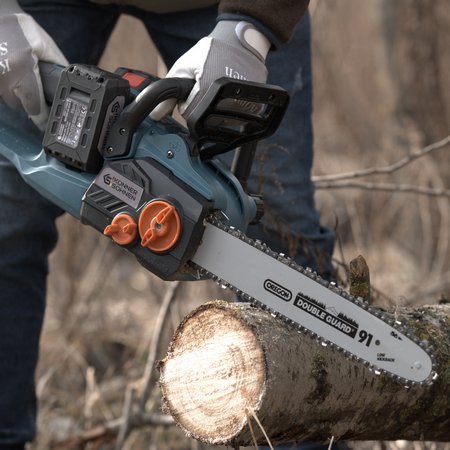Könner & Söhnen generatori su dizajnirani kao IT sistemi i opremljeni su osnovnom zaštitom kroz izolaciju aktivnih, provodnih delova prema DIN VDE 0100-410.
PE pinovi u utičnicama su povezani sa telom generatora, kao i uzemljeni šraf. Kućište generatora je izolovano od provodnih L i N provodnika.
Kada se generator koristi mobilno, zaštitna separacija sa izjednačavanjem potencijala se obično koristi kao zaštitna mera.
Laik sme koristiti samo jedno opterećenje na zaštitnoj separaciji bez dodatnih zaštitnih mera:

Zaštitne mere sa više od jednog opterećenja mogu se koristiti i nadzirati samo od strane električnih stručnjaka ili obučenih osoba. Važno je osigurati da generator i opterećenja nemaju provodnu vezu sa zemljom i da su međusobno povezani preko izolovanih provodnika za izjednačavanje potencijala. Unakrsne veze sa drugim krugovima (npr. TN mreža u zgradi) moraju biti isključene. Dužina veza ne sme prelaziti 500 m:

"Električno obučena osoba" je neko koga je električni stručnjak informisao o dodeljenim zadacima i potencijalnim opasnostima nepravilnog ponašanja, ko je obučavan i informisan o potrebnim zaštitnim uređajima i merama bezbednosti.
U IT sistemu, gde kontakt tela uređaja sa provodnom zemljom nije isključen, mora se instalirati odgovarajući uređaj za nadzor izolacije:

U IT sistemu, gde kontakt generatora ili tela uređaja sa provodnim zemljom (Re) nije isključen, ili neka opterećenja nemaju kontakt za izjednačavanje potencijala, generator mora biti uzemljen, a svi uređaji moraju biti pojedinačno zaštićeni RCD-ovima (FI prekidačima):

U ovom sistemu, u slučaju drugog kvara, ili će se prekidač aktivirati zbog kratkog spoja, ili RCD (prvi kvar na generatoru, drugi kvar na uređaju), ili će se aktivirati jedan od dva RCD-a dva uređaja (prvi kvar na jednom i drugi kvar na drugom) ako se oba dodirnu.

Za opterećenja koja zahtevaju uzemljeni neutralni provodnik (npr. veš mašine, grejanje), mora se koristiti TN sistem sa uzemljenjem i uzemljenim neutralnim provodnikom.

Ako su generator i uređaj za zaštitu od strujnog kvara (RCD) prostorno odvojeni, priključni kablovi moraju biti postavljeni na način koji sprečava kratke spojeve i zemljospojeve.
Ako se generator konvertuje u TN sistem postavljanjem mosta između N i PE unutar generatora, više se ne sme koristiti bez uzemljenja, i mora se sprečiti da laik nesvesno koristi generator kao IT sistem i povezuje opterećenja bez uzemljenja generatora i bez potrebnih zaštitnih mera.
Generatori sa IT-TN prekidačem su stoga opremljeni posebnim utičnicama za napajanje kuće sa pozicijom 1h (PE). Schuko i CEE utičnice sa pozicijom 6h se deaktiviraju prilikom prebacivanja na TN sistem, tako da nijedno opterećenje sa Schuko utikačima i CEE utikačima sa pozicijom 6h ne može biti napajano od strane generatora nakon prebacivanja na TN sistem. Utičnica sa pozicijom 1h se koristi za napajanje kuće sa posebnim kablom. Ovaj kabl takođe povezuje generator sa uzemljenjem kuće preko PE kontakta (najmanje 6 mm² bakra po provodniku).
Međutim, većina generatora na tržištu su IT sistem generatori i nemaju IT-TN prekidače ili utičnice sa pozicijom 1h za napajanje kuće u TN sistemu. Preporučujemo da se mostovi između N i PE ne postavljaju interno u takvim generatorima kako bi se sprečila zloupotreba modifikovanog generatora od strane laika.
TN mreža se može izgraditi sa generatorom. U određenim slučajevima, mobilna upotreba može to zahtevati (npr. napajanje kampera). U tom slučaju, preporučujemo uzemljenje N provodnika generatora zajedno sa kućištem generatora spolja.
Za ovo možete koristiti adapter kabl sa granama N i PE, koji se zatim može vidljivo povezati sa uzemljujućim šrafom generatora zajedno sa uzemljenjem.

Adapter kablovi sa unutrašnjim mostovima ne bi trebalo da se koriste (čak i ako su označeni) kako bi se sprečilo da laik koristi takav kabl negde drugde ili bez uzemljenja generatora, što bi moglo predstavljati opasnost.
Most između N i PE bez uzemljenja predstavlja prvi kvar u IT sistemu, i takav sistem se ne sme koristiti!
U stambenoj upotrebi, može se koristiti uzemljenje kuće. U mobilnoj upotrebi u TN sistemu, mora se izvršiti pravilno uzemljenje (ukršteno uzemljenje, uzemljivački šiljak, itd.). U TN sistemu, sam generator i njegov neutralni provodnik (zvezdasta tačka) moraju biti uzemljeni.
Nakon takvog adaptera, RCD se može koristiti za zaštitu od dodira. Ovo je neophodno ako, na primer, pojedinačna opterećenja treba da se povežu nakon adaptera:

VAŽNO: Neutralni provodnik generatora je uzemljen na tački priključka kuće preko glavne uzemljujuće sabirnice u kući kada je most između N i PE postavljen na prekidaču na strani generatora, i nije potrebna modifikacija generatora ili adaptera! Jedini izuzetak su generatori sa internim ATS modulima. Više informacija o ovome možete pronaći u našim informativnim materijalima za svaku grupu generatora na našem sajtu.
Evo primera kućne veze sa inverter generatorom preko utičnice za napajanje na spoljašnjem zidu kuće:

Most između N i PE postavljen je na prekidaču u kući i povezan sa kućnim uzemljenjem. Generator ostaje kao IT sistem dok se ne poveže sa kućom. Ovo eliminiše mogućnost zloupotrebe generatora. Generator se može koristiti mobilno kao IT sistem, ali kada je potrebno, može se povezati sa kućom kablom i koristiti kao izvor napajanja u TN mreži.
Prekidač prebacuje potrošače koji su omogućeni za hitno napajanje sa javne TN ili TT mreže na TN mrežu sa generatorom.
Sam generator (uzemljenje) mora biti uzemljen ili preko kućnog uzemljenja ili sopstvenog uzemljenja.
Ako generator ima samo Schuko utičnice, one se mogu koristiti za napajanje kuće, baš kao i CEE utičnice. Schuko utikač se može okrenuti bez uticaja na napajanje kuće jer su dva aktivna kontakta u Schuko utičnici jednaka. Dva kontakta su definisana kao N i L u kući.
Ovo ne utiče na zaštitu od preopterećenja i kratkog spoja generatora.
Protok struje tokom kvara u opterećenju ili u distribuciji:

Protok struje tokom mogućeg kvara u generatoru:

Uzemenjenje generatora ili zasebna veza od njegovog uzemljenja do kućnog uzemljenja služi kao zaštita u slučaju prekida PE provodnika u kablu za napajanje od utičnice do kućnog uzemljenja ili ako kabl za napajanje ima poprečni presek manji od onog koji je potreban za uzemljenje. Ovo je apsolutno neophodno jer je N provodnik povezan sa PE van generatora. Poprečni presek uzemljenja je standardizovan i generalno ne bi trebalo da bude manji od 6-10 mm² (bakar) u zavisnosti od zemlje.
Izbor odgovarajućeg generatora treba pažljivo izvršiti, jer neodgovarajući generator može ne samo ugroziti predviđenu upotrebu već i uništiti opremu i sebe dovesti u opasnost. Prodajemo agregate za hitne slučajeve i pružamo naše preporuke za njihovu upotrebu. Analiza postojećih sistema napajanja i razvoj personalizovanih rešenja za hitno napajanje su posebne usluge koje nisu deo tehničke podrške za generator.
Odricanje od odgovornosti:
Ovaj priručnik treba smatrati samo preporukom, on je ilustrativan i mora biti prilagođen tačnim okolnostima i uslovima na licu mesta tokom instalacije. Sama instalacija treba da se izvrši u skladu sa svim standardima i propisima. Ne preuzimamo odgovornost za nepravilne instalacije i njihove posledice.

